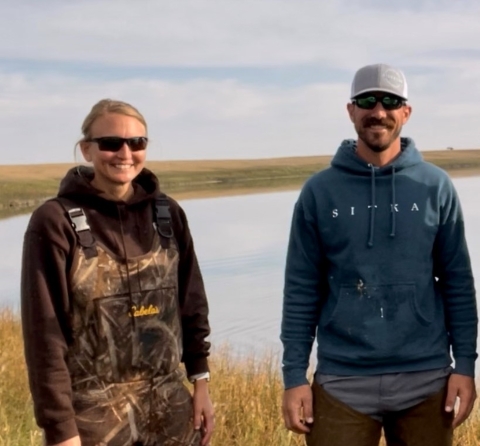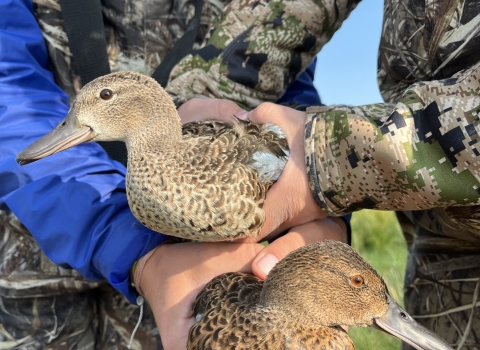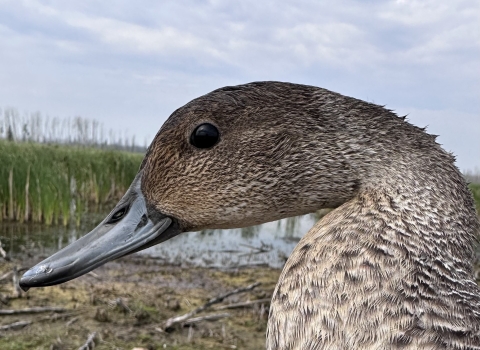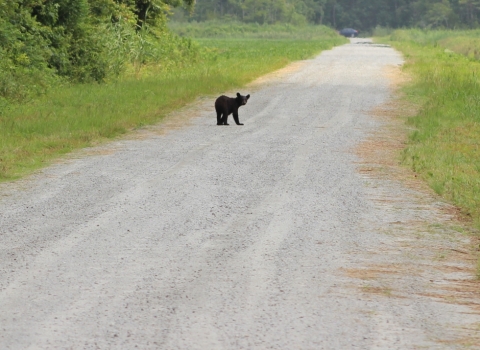In many ways, the process of banding waterfowl is not much different than hunting them. First, you need to find where the birds want to be. If I have learned anything over my many years spent in the marsh, it is to “trust the birds.” What looks good to me rarely matters. Next, you need to determine how they are utilizing the area and ask yourself a few questions. Is this a feeding, resting, or roosting location? What time of day are they there and for how long? How will the prevailing weather influence their behavior? Are there any potential disturbances that could ruin things? Finally, what is it going to take to get to that spot day-in and day-out with a bunch of gear?
During hunting season, I typically do not pay much attention to the latter because I have always felt a little pain and suffering enhances the experience. Although, this way of thinking is not always practical for work or the morale of our crew. Not to mention, the amount of time it would take to visit a dozen or more of these sites in one day could become logistically exhausting.
Our crew this year consisted of Jeff Newton, a U.S. Fish and Wildlife Service retired employee, Joe Daniels with the Kansas Department of Parks and Wildlife, Ryan Assenheimer with the Texas Department of Parks and Wildlife, Jess Larson with the U.S. Fish and Wildlife Service, and myself, also with the U.S. Fish and Wildlife Service. This was my second year returning to the northeastern Montana prairie to band ducks. My initial assumption was that I would have the advantage of the past season’s experience at the same location but that was not the case.
Last year we dealt with exceptionally low water-levels and daytime temperatures in the upper 90’s and low 100’s, but this year’s precipitation and milder summer temperatures resulted in wetlands nearly full of water and ducks!
Typically, full wetlands are a good thing but an additional 18 – 24 inches of water transformed the landscape into an entirely different place. We had to rethink, or even abandon, many of the better sites from last season because of water depth issues. Diving duck traps are well suited for waist-deep water, but dabbler traps require much less water.
Another challenge to banding in this region comes from all of the locally produced grain available to birds. Even with all of the modern methods in agricultural harvest, there is a lot of grain left on the ground and free for the taking. In a hunting scenario, this would not be that big of a challenge and we would catch them somewhere else. Convincing a duck with a crop full of wheat and peas to swim into a trap is an entirely different story. Luckily, we get to cheat a little by adding some bait to the equation.
Overall, we had a great month and banded 12 different species. There are many dabbling ducks in the area but this is a great place for catching divers as well. At the top of the list were 290 redheads and 75 lesser scaup -- many of them locally hatched. We even had a few ring-necked and ruddy ducks, which was a first for me.
Much like a typical hunting season, banding is much more than the number of birds. Make no mistake -- I enjoy big numbers of birds in both situations. However, at the end of the day, the most valuable parts of it all are the memories that come from the stories told, laughter shared, and friendships developed. Thanks to all of those who played a part in another great banding season!
Now – Is it duck season yet?
Disclaimer: All banding, marking, and sampling is being conducted under a federally authorized Bird Banding Permit issued by the U.S. Geological Survey’s Bird Banding Lab and the Bird Banding Office in Canada.






